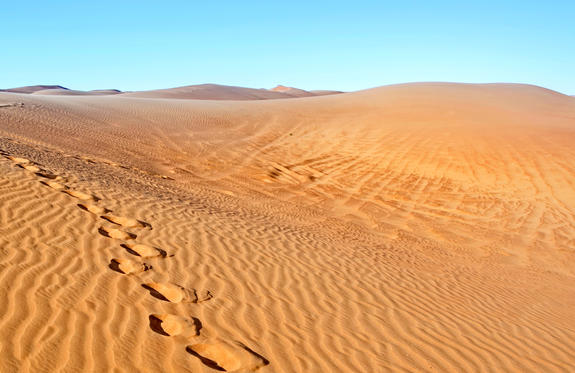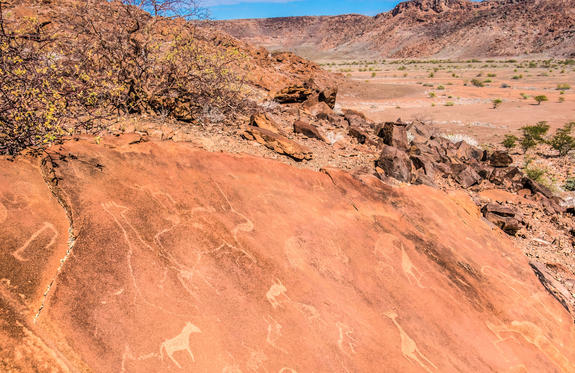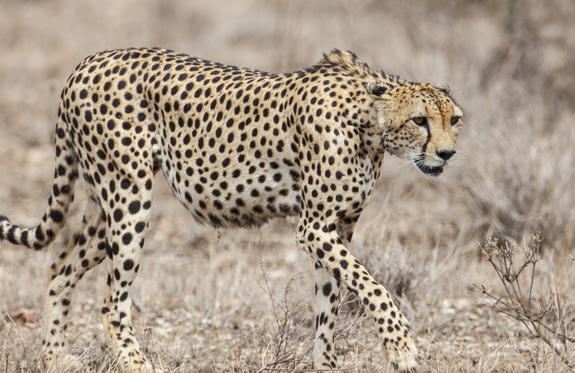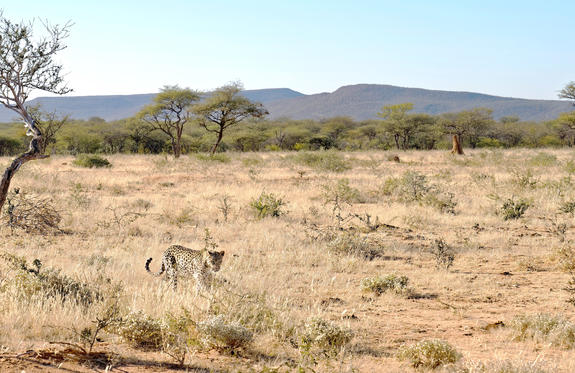One of the most culturally and geographically diverse places on earth, South Africa, fondly known by locals as the 'Rainbow Nation', boasts 11 official languages, and its inhabitants are influenced by a fascinating mix of cultures. Discover the gourmet restaurants, impressive art scene, vibrant nightlife, and beautiful beaches of Cape Town. Enjoy a local braai (barbecue) in the Soweto township, browse the bustling Indian markets in Durban, or sample some of the world's finest wines at the myriad wine estates dotting the Cape Winelands. Some historical attractions to explore include the Zululand battlefields of KwaZulu-Natal, the Apartheid Museum in Johannesburg, and Robben Island, just off the coast of Cape Town. Above all else, its untamed wilderness is astonishing: wildlife roams freely across massive unfenced game reserves such as the world-famous Kruger National Park.

Cape Town is one of the most beautifully situated cities in the world. Cradled by Table Mountain, it has immense charm and historical interest. We never tire of soaking up the beauty & buzzy atmosphere of this relaxed city with its cosmopolitan dining options.
No Cape Town visit is complete without taking the cable car up Table Mountain. You can even abseil off the top for the ultimate adrenalin rush. In the city, you can visit the colourful Bokaap quarter, an ecletic array of museums from District Six to the Museum of Gold or browse through the vibey street markets such as Greenmarket Square. Alternatively meander through the wonderful Kirstenbosch Botanical Gardens, head out to Robben Island by boat or simply relax on the golden beaches of Camps Bay or Llandudno.
When you want to range further, the Cape Peninsula offers one of the finest coastal drives in Africa – Chapmans Peak Drive - to the Cape of Good Hope. Here you might see whales breeching just off the bay or quirky penguins on Boulders Beach.

The Cederberg Mountains lie approx 2-3 hours drive north of Cape Town. Travel over the Piekenierskloof pass and you descend into a different world. The scenery has changed; wilder, warmer with a raw, dramatic beauty. Towering mountains, brilliant purple in the late afternoon light, preside over a fruit-filled valley laden with the scent of orange blossom in the spring.
The Cederberg provides a natural arena for adventure lovers with great hiking and bouldering opportunities. Take a fascinating journey to the picturesque mission village of Wupperthal deep in the Cederberg, or follow a walking trail to some ancient rock paintings. Enjoy hiking in the wilderness, swimming in waterfall rock pools or simply relaxing in one of the most beautiful and peaceful areas of South Africa. In the Biedouw valley and elsewhere, the wild spring flowers are a spectacular sight from August to early September.
En route to the Cederberg you may like to visit the Cape West Coast, with its unique sandveld vegetation, picturesque fishing villages, long sandy beaches and immense bird colonies. Its relaxed hospitality is amply demonstrated by the outdoor seafood restaurants on the beach.

Nestled amongst rugged mountains, Springbok is Namaqualand's commercial and cultural centre. This prosperous town has various sites of interest, including historical monuments, museums, a scenic 4x4 route, several excellent mountain biking trails, and some fascinating geology - making for a wonderful photographic trip. Springbok is also close to the beautiful Namaqualand wildflower reserves, the secluded Richtersveld National Park, and the thundering Augrabies Falls. Another great spot to cool off while enjoying nature here is the pretty Port Nolloth Beach, nearby. The town makes for a wonderful stop on the way to Namibia.
Located in southwestern Africa, Namibia boasts a well-developed infrastructure, some of the best tourist facilities in Africa, and an impressive list of breathtaking natural wonders. Visitors can explore the capital of Windhoek and discover the lovely coastal town of Swakopmund boasting remnants of the country’s German influence, reflected in the architecture, culture, cuisine and the annual Oktoberfest celebrations. To properly appreciate this extraordinary country, you will have to venture out of the cities to explore the remarkable natural landscapes Namibia has to offer. These include: the impressive Fish River Canyon; the vast Etosha National Park teeming with abundant wildlife, such as lions, desert-adapted elephants and the Hartmann's Mountain Zebra; the hauntingly beautiful Kalahari Desert; and of course the Namib Desert stretching for over 2000 km along the magnificent Atlantic Coast. Namibia is an ideal destination for travellers seeking an unforgettable African experience in a uniquely beautiful untamed wilderness.

Second in size only to the Grand Canyon in the USA, the Fish River Canyon is one of the world's great natural wonders. But unlike its more famous big brother, you will not have to share the experience with thousands of other people. Its comparative remoteness means that it is little visited. It meanders for 160km through the barren landscape of southern Namibia, reaching a depth of 550m and a width of 27km. Geologically, it is in fact a canyon within a canyon. The legendary origin of the canyon, according to local San hunters, is that a serpent retreated into the desert to escape hunters and carved deep scars into the earth there.
We suggest an early start to appreciate the majesty of the canyon before the strong light washes the colour of the rocks away. There are several viewpoints, which give magnificent vistas of the canyon. You might also like to walk along the canyon edge to gain a perspective on its size as there is a track which follows the edge.
In the dry winter months, you can undertake a multi-day hike through the dry and stony canyon. It is too hot to undertake in summer. At the bottom part of the canyon are the hot springs of Ai-Ais which you may like to visit.

Perched above the plains of the Namib Desert in the rocky Aus Mountains, the small village of Aus lies at the heart of phenomenal botanic diversity. Aus serves as an excellent base from which to see the area’s major attraction: the feral horses of the Namib Desert, which run wild and free in the sparsely vegetated plains. The best place for viewings is at the water trough at Garub, which lies just twenty kilometres away from Aus. Visitors can gain insight into the Succulent Karoo by visiting beautiful Gondwana Sperrgebiet Rand Park, home to the most biodiverse desert in the world. Don't miss the opportunity to camp under the famously clear Namibian night sky and experience the desert landscape on horseback.

As there is no accommodation at Sossusvlei, visitors to this desert wilderness are likely to end up staying at Sesriem, 65 kilometres away, where camps and lodges serve as a base from which to explore the dunes. Sesriem Canyon, a deep chasm carved through the rocks by water, is a striking natural feature of the area that is best explored on foot. Stony walls rise up sharply on both sides of the canyon, while birds roost in its crags and lizards dart along the ledges. The canyon’s name was coined when early settlers used it as a water source, using six lengths of leather (‘ses riem – six thongs) tied together to lower buckets into the water at the base of canyon.)

Swakopmund has a distinctive continental atmosphere and many picturesque reminders of the German colonial era, somewhat incongruous in the midst of the Namib Desert! (Founded in 1892 as the main harbour for Namibia, Swakopmund is often described as being more German than Germany.) Now this charming seaside town, with its palm-lined streets, provides a welcome resting place where you can stroll along the beach, enjoy superb seafood or marvel at the High German architecture. The quirky mix of German and Namibian influences, colonial-era buildings and the cool sea breeze contrast with the arid interior.
There's plenty to see in and around Swakopmund such as visiting the Seal Colony at Cape Cross, the flamingos at Walvis Bay and Sandwich Bay. Take a drive to the surreal landscape of the 'Moon Mountains', an area of deep chasms and interesting geological features, or perhaps try some sand-boarding, quad-biking or riding a camel into the desert. There are plenty of day excursions to choose from, even aerial flights over the Namib Desert.

Twyfelfontein is a site of ancient rock engravings in the Kunene Region of north-western Namibia.
Resting majestically in the heart of Namibia's Damaraland region, The Grootberg Plateau showcases stunning natural landscapes characterised by deep canyons, dramatic rock formations, and expansive vistas. The renowned Grootberg Pass winds through mountains, offering spellbinding views. On the drive, one may come across the Himba people, known for centuries-old livestock farming practices. Encounters along the Grootberg Pass may include purchasing handmade jewellery while supporting the community with donations. Despite its rugged terrain, Grootberg hosts diverse wildlife, including black rhinos, giraffes, and desert elephants, adapted to harsh desert conditions. Additional activities include walking trails, birdwatching, and Damara Cultural Tours. End the day with a 4x4 drive atop the flat plains of the Grootberg Plateau that leads to a jaw-dropping viewpoint and watch the sunset.

Located just south of the boundary of Etosha National Park in northwestern Namibia, Etosha South makes up the southern region of this wild paradise. The area is comprised of a collection of world class private game reserves. The national park can be accessed via the southern entrance at Andersson’s Gate. Visitors can catch a glimpse of a variety of wildlife including: lion, giraffe, elephant, white and black rhino, and a multitude of plains game. Popular activities include: enjoying an open 4x4 safari with an expert guide, half day or full day drives with the option of a picnic lunch with wine on the full day game drive.

The central highlands of Namibia are the backbone of mountains that divide the coastal desert and the higher, more temperate interior. These rolling hills are the home to many of Namibia’s sheep and cattle ranches. Some of these offer a ‘guest farm’ experience where you stay on the farm and experience what it is like to farm in such a vast terrain. Others such as Okonjima and Erongo have turned to wildlife conservation many years ago.
The distance between Windhoek and Etosha is a solid 5-6 hour drive so we often recommend breaking the journey for a night or two.
The Africat project on Okonjima is a pioneer in the world of wildlife research & conservation, focusing on rehabilitating cheetah and other predators into the wild. Okonjima is home to AFRICAT, a Carnivore Conservation centre, which gives the carnivores captured by local farmers a second chance to be released back into the wild. Also in the Reserve is a 2000 ha 'safe' zone around Plains Camp, Bush Camp, Bush Suite as well as the PAWS Environmental Education Centre.





